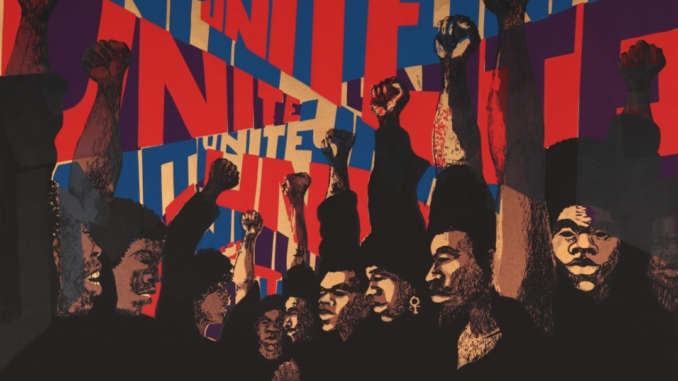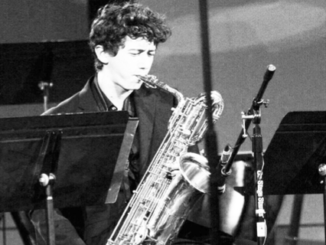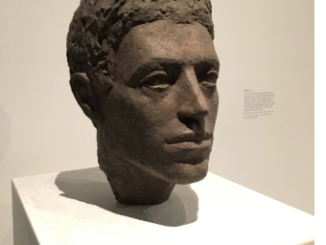
Clare Beezhold
Staff Writer
The “Soul of a Nation: Art in the Age of Black Power 1963-1983” exhibit showcases the vibrant contributions of black artists during the Civil Rights Movement.
Featuring the work of more than 60 influential artists, the exhibit includes photography, paintings, sculptures, assemblage art and murals. This landmark exhibit is a rare opportunity to see era-defining artworks as it examines the influences from the Civil Rights and Black Power movements, as well as minimalism and developments in abstraction.
London’s Tate Modern Museum organized the exhibit, which first opened in 2017. From London, the exhibition traveled to the Crystal Bridges Museum of American Art in Arkansas and then to the Brooklyn Museum. The gallery pays respect to the 1971 Los Angeles County Museum of Art exhibition “Three Graphic Artists,” Noah Purifoy’s assemblage art and works from LA artist Betye Saar.
During the Civil Rights Movement, artists engaged in widespread debates on the role of art. While many discussed what it meant to be a black artist, some rejected definitions altogether. The artists in “Soul of a Nation” are profoundly aware of their political views, and each takes an aesthetic position in relation to them. The gallery includes a call for equality in response to ongoing injustices, and highlights a powerful surge of pride in cultural heritage. Viewers can feel the passion for change through the pieces and the messages portrayed on each canvas are breathtaking.
One of the featured LA artists in the exhibit, Noah Purifoy, found inspiration for his assemblage art in monumental events, mainly the Watts Riots in Los Angeles. These riots played a central role in both the black assemblage movement and efforts to elevate the work of black artists in mainstream institutions. As the father of the Black Assemblage Movement, Purifoy scoured the streets of Watts almost immediately after the riots in order to collect a combination of items to include in his art. Purifoy successfully managed to find beauty in the debris from the riots and transformed that rubble into stunning works of art.
Similarly, after a career in design, LA artist Betye Saar turned to assemblage, often obtaining materials from local flea markets and garage sales. She then recycled the derogatory images of black people that she found and transformed them into works protesting racism. The racist depictions that Saar found at flea markets and in curio shops appalled her. Now, she uses her inspiring artwork to shock viewers through her ability to transform a figure such as Aunt Jemima, the nation’s most recognized Southern figure, in her piece “The Liberation of Aunt Jemima,” refacing her with radical black nationalist imagery.
One of the pieces on display is an oil painting by Archibald Motley titled “The First One Hundred Years: He Amongst You Who Is Without Sin Shall Cast The First Stone; Forgive The Father For They Know Not What They Do,” which was painted between 1963-72 amongst Civil Rights turmoil. The heartbreaking scene is an allegorical history of the nation at its symbolic best and worst. Some symbols include assassinated leaders, such as Dr. Martin Luther King Jr. and former presidents John F. Kennedy and Abraham Lincoln hovering over a lynched body. There is a profound message conveyed through the fine details that allude to segregation, as well as placards which simultaneously argue for black and white power, perfectly displaying the tangled history of race in the United States.
A series of photographs taken by Lorraine O’Grady in 1983 titled “Art Is…” is also on display. The photographs are the ideal closing to the exhibit and depict O’Grady’s involvement in the Harlem African American Day Parade. Of the 400 photographs taken that day, the artist only selected 40 of the images, which all convey a range of emotions and complexity that O’Grady aimed to make visible. In the photos, she displays large gold frames in the float and hired 15 dancers to carry smaller gold frames disembarking from the float to interact with the crowd. Some of the onlookers in the images react enthusiastically while others look less than
impressed. The images are a perfect way to experience both the strides U.S. citizens have made and the work that still has to be done in terms of race in America.
After experiencing the moving pieces on display, it is obvious that this landmark exhibition is a rare opportunity to see era-defining artworks that changed the face of art in America. Viewers can be sure to walk away from this exhibit with new knowledge of the nation’s troubled racial history and a look into these artists’ political visions and sense of cultural pride.
“Soul of a Nation: Art in the Age of Black Power 1963-1983” is on display at The Broad Museum until Sept. 1. Admission to the art gallery is $12-$18. For more information regarding this and future exhibits, visit thebroad.org





Leave a Reply